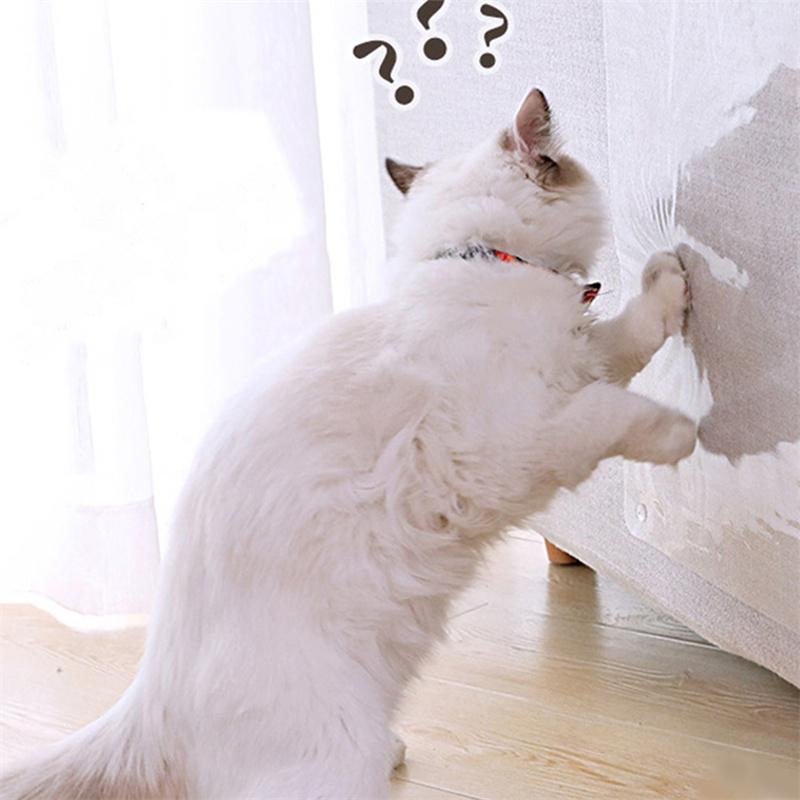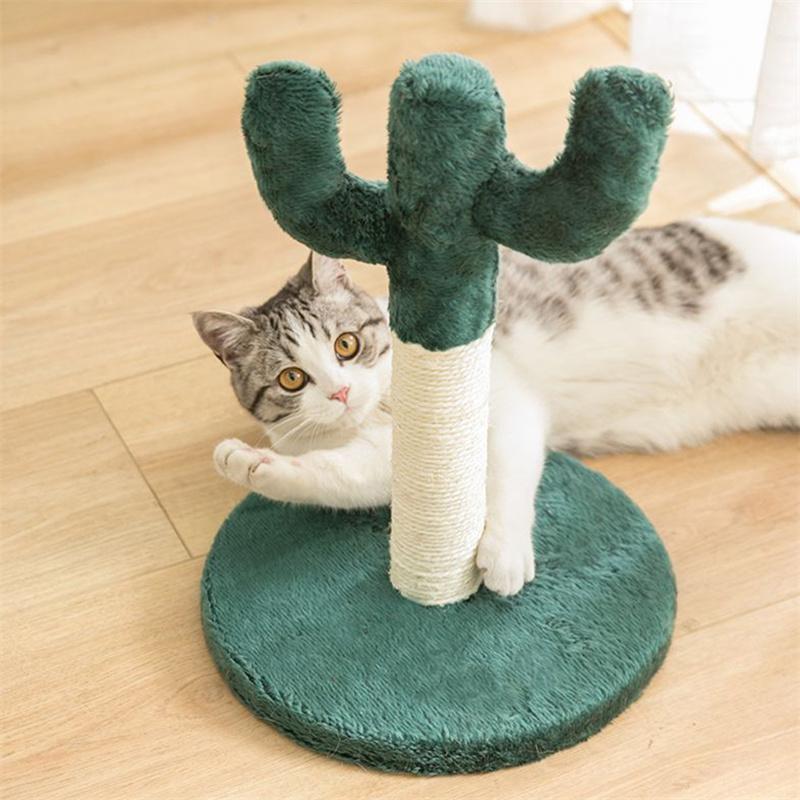If your beloved cat has a penchant for clawing and scratching various surfaces in your home, the frustration is understandable. Many pet owners, seeking a quick fix, contemplate declawing as a solution. However, it’s crucial to recognize that declawing is not only an ineffective solution but also a harmful one.
Declawing is an invasive procedure that involves amputating the last bone of each toe. This process is painful for the cat and can lead to long-term consequences, including behavioral issues. Cats rely on their claws for various purposes, such as grooming, stretching, and marking territory. Removing this essential aspect of their anatomy can result in physical and psychological distress.
The pain and trauma from declawing may lead to behavioral changes, such as increased aggression, reluctance to use the litter box, or withdrawal. In attempting to resolve one problem, pet owners may inadvertently create new challenges for their feline companions.
Understanding why cats scratch is fundamental to finding a humane and effective solution. Scratching is a natural behavior for cats, serving multiple purposes. It helps them shed the outer layers of their claws, mark territory, and stretch their muscles.

Why cats scratch surfaces
1. Claws are a part of them
a cat’s claws are intrinsic to their nature and essential for various functions. In the wild, claws are vital tools that facilitate a cat’s survival and daily activities. They play a crucial role in hunting, allowing cats to grasp, hold, and capture prey effectively. The act of pawing and scratching not only aids in obtaining food but also serves as a means of communication and marking territory.
Furthermore, the agility and acrobatics displayed by cats, such as climbing and leaping, are made possible by their claws. They provide traction and grip, enabling cats to navigate diverse terrains, climb trees, and maintain balance with remarkable precision. The claws are not merely tools but integral components that enable a cat’s mobility, dexterity, and survival instincts.
Even in a domestic setting, the innate behaviors associated with scratching remain deeply ingrained. While the environment may have changed, the fundamental essence of the cat’s nature remains unchanged. Thus, it is natural for cats to exhibit scratching behaviors as they adapt and express their inherent instincts within their home environment.
Understanding and respecting these intrinsic needs and behaviors are essential for fostering a harmonious relationship with our feline companions.
2. To sharpen their claws
Since cats need their claws for survival, it is only natural that they keep them sharp. But unfortunately for you, that means scratching your beautiful furniture and other prized possessions. Scratching helps remove the outer sheaths of cats’ claws, allowing new, sharper claws to grow. This process helps to keep their claws healthy and in top form for survival and self-defense.
3. To mark their territory
When we think of animals marking their territory, dogs often come to mind. However, it’s important to remember that cats also have inherent instincts to claim certain spaces as their own. While they typically use litter boxes and spraying to establish their territory, another common and often frustrating behavior is scratching.
Scratching posts provide a designated area for your cat to mark their territory, enabling them to feel secure within their defined space.
How to stop cats from scratching
Cover the surfaces
- Aluminium Foil: An Effective but Temporary Solution
One way to stop your cat from scratching furniture is to strategically cover the surfaces with aluminium foil. Cats, in general, dislike the noise and sensation of scratching on foil, so they will likely avoid it. The sound of their claws against the foil can be unpleasant for them, thus acting as a deterrent. Additionally, cats despise the feel of foil under their paws, discouraging them from stepping on it.
While aluminium foil can be effective, it does come with some drawbacks. The first issue is aesthetics. Let’s face it; the sight of shiny foil covering your furniture may not be the most appealing solution. It can also pose challenges if you have guests coming over or if you prefer maintaining a visually pleasing environment. Moreover, this method is not a permanent solution since your cat may eventually become accustomed to the foil or find other areas to scratch. Therefore, using anti-scratch stickers might be a better alternative.
- Anti-Scratch Stickers: A Permanent and Aesthetic Solution
Anti-scratch stickers, available through various pet supply online stores, can play a significant role in stopping your cat’s destructive behavior. These specially designed stickers utilize different techniques to discourage scratching. Some feature textures that are uncomfortable to a cat’s sensitive paws, while others are infused with scents cats find unappealing. These stickers provide an alternative scratching surface for your cat, redirecting their attention away from your furniture.
Unlike aluminium foil, anti-scratch stickers are a more aesthetically pleasing choice. They come in various designs and colors to match your furniture, blending seamlessly with your decor. This cat-friendly solution allows you to protect your precious belongings without sacrificing your home’s visual appeal. Additionally, anti-scratch stickers are a long-term solution, making them a great investment for both your furniture and your cat’s well-being.
Use the yes and no technique
Many cat owners make the mistake of solely focusing on discouraging their cats from scratching the furniture. While it’s necessary to teach your pet boundaries, simply saying “no” without providing an alternative solution will only frustrate your furry friend. Remember, cats need to scratch, and by preventing them from scratching altogether, you risk compromising their well-being.
The key to preserving your furniture and maintaining your cat’s happiness lies in finding them an acceptable scratching outlet. Here are a few options to consider:
- Scratching Posts or Boards: Invest in a sturdy scratching post or a scratching board. Ideally, these should be tall and stable, allowing your cat to stretch to their full extent while scratching. You can even try sprinkling some catnip on the post to attract their attention and encourage them to use it.
- Cardboard Scratchers: Cardboard scratchers are an inexpensive and readily available alternative. They offer a satisfying scratching surface and are easily replaceable once they become worn out.
- Sisal Rope-Covered Objects: Cats are often drawn to items wrapped in sisal rope texture, such as scratching ramps or mats. These objects provide a different texture for scratching, which some cats may prefer.
Use vinyl nails
Vinyl nails are soft and when worn on their nails, cats can not scratch surfaces. But you need to understand that scratching is a part of your cat’s life and taking that away from it can make your little feline friend sad. So instead, try any of the solutions above and let the vinyl nails be your last resort when all others have failed.
Store them away
Although you have to understand that your cat needs to scratch, it doesn’t mean you should compromise with your precious furniture and other items. If these are prized possessions that you would rather not have destroyed or scratched, simply put them away in your home storage and only go for them when you need to use them.
Understanding and addressing your cat’s need to scratch is vital for their well-being, but it doesn’t mean you have to sacrifice your furniture and valuable possessions. By investing in suitable scratching posts, training your cat, and considering alternatives like Soft Paws or nail trims, you can redirect their scratching behavior and protect your belongings. Remember, until your cat learns the appropriate scratching spots, it’s wise to temporarily store your treasured items. With a little effort and patience, you can create a harmonious living space that accommodates both you and your cat.

